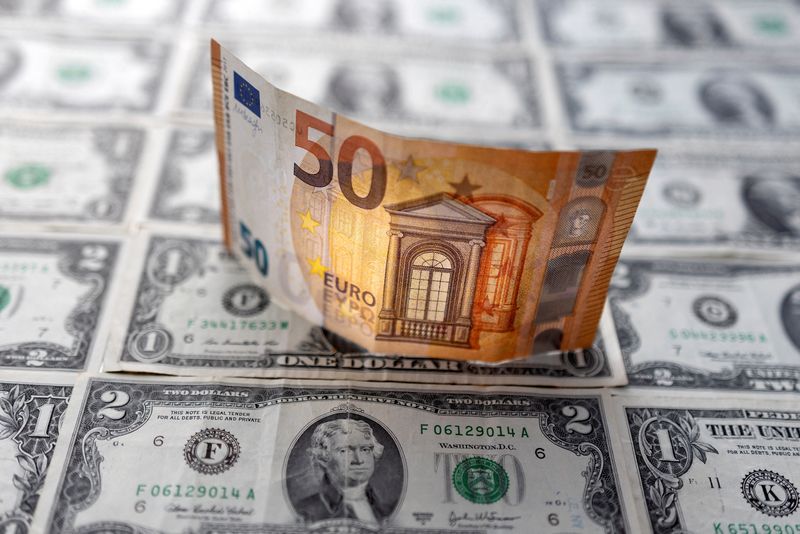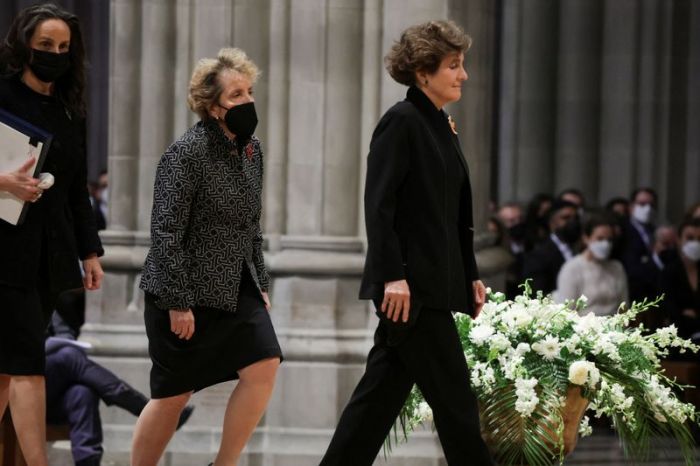NEW YORK (Reuters) – The dollar hit a five-year high on Wednesday before the Federal Reserve next week is expected to hike rates, while the euro weakened on growth concerns after Russia cut off gas supplies to parts of the region.
The dollar has gained on expectations that the U.S. central bank will be more hawkish than peers. The Fed is expected to increase rates by 50 basis points at its May 3-4 meeting, as well as in June and July.
The greenback has also benefited from global growth concerns as Europe struggles with the fallout from Russia’s invasion of Ukraine and China enacts lockdowns in a bid to stem the spread of COVID-19.
Russia’s Gazprom halted gas supplies to Poland and Bulgaria on Wednesday over their failure to pay in roubles, cranking up an economic war with Europe in response to Western sanctions imposed for Moscow’s invasion of Ukraine.
“This is putting further upward pressure on gas prices in the region and exacerbates the worrying growth-inflation mix that has been deteriorating rapidly since the start of this year,” Dominic Bunning, head of European FX research at HSBC said in a report.
Concerns over Chinese growth added to demand for the dollar, and further dented the outlook for other countries that are more exposed to the world’s second largest economy.
Beijing has ramped up mass-testing for COVID-19 while the financial hub of Shanghai has been under strict lockdown for around a month.
“Exaggerating the downside risk for euro/dollar have been the COVID lockdown fears for China,” said Jane Foley, Head of FX Strategy at Rabobank London.
The dollar index against a basket of currencies reached 103.05, the highest since Jan. 2017.
The euro fell 0.83% to $1.0549, the weakest since March 2017. The single currency has fallen 4.7% so far in April and is heading for its worst monthly loss in more than seven years.
Germany’s economy ministry on Wednesday cut its economic growth forecast for 2022 to 2.2% from its late January prediction of 3.6% growth this year. French consumer confidence also fell more than expected in April.
The stronger dollar also blunted an attempted bounce for the yen, which had seen some support from safety flows and positioning for the risk of a policy shift. The yen last traded at 128.09 per dollar, after hitting a 20-year low of 129.4 last week.
Investors will be watching to see if the Bank of Japan makes any changes to its yield curve control policy in order to stem yen weakness when it concludes its two-day meeting on Thursday.
Sterling hit a fresh 21-month low of $1.2529 as retail sales slumped, and was last down 0.07% at $1.2566.
The Australian dollar briefly touched its lowest level since February but caught some wind after Australian consumer prices surged at their fastest annual pace in two decades, spurring speculation that interest rates could be lifted from record lows as soon as next week. The Aussie was up 0.08% at $0.7131. AUD/
========================================================
Currency bid prices at 9:39AM (1339 GMT)
Description RIC Last U.S. Close Pct Change YTD Pct High Bid Low Bid
Previous Change
Session
Dollar index 102.9800 102.3000 +0.67% 7.649% +103.1000 +102.2100
Euro/Dollar $1.0549 $1.0637 -0.83% -7.21% +$1.0655 +$1.0534
Dollar/Yen 128.0900 127.2800 +0.65% +11.38% +128.2250 +127.0900
Euro/Yen 135.14 135.32 -0.13% +3.70% +136.1500 +134.9900
Dollar/Swiss 0.9688 0.9626 +0.61% +6.17% +0.9696 +0.9614
Sterling/Dollar $1.2566 $1.2573 -0.07% -7.10% +$1.2602 +$1.2529
Dollar/Canadian 1.2837 1.2826 +0.12% +1.56% +1.2847 +1.2780
Aussie/Dollar $0.7131 $0.7125 +0.08% -1.90% +$0.7190 +$0.7115
Euro/Swiss 1.0218 1.0237 -0.19% -1.46% +1.0259 +1.0213
Euro/Sterling 0.8394 0.8459 -0.77% -0.07% +0.8467 +0.8396
NZ $0.6555 $0.6562 -0.12% -4.24% +$0.6591 +$0.6541
Dollar/Dollar
Dollar/Norway 9.3300 9.2350 +1.04% +5.92% +9.3420 +9.2200
Euro/Norway 9.8427 9.8414 +0.01% -1.70% +9.8487 +9.7635
Dollar/Sweden 9.8535 9.8373 -0.74% +9.27% +9.8820 +9.7895
Euro/Sweden 10.3958 10.4731 -0.74% +1.58% +10.4757 +10.3947
(Additional reporting by Joice Alves in London, editing by Mark Heinrich)

























